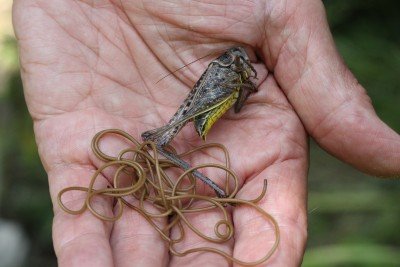
When we think of our backyards, we often picture birds chirping, squirrels chattering, or even the odd raccoon rummaging through the trash. But what if I told you that something as small as a worm could have a ripple effect on these creatures? It’s like that butterfly effect concept, where one small change creates a whole chain of events. Let’s dig into how wolf worms might just play a part in shaping our local wildlife.
What Are Wolf Worms?
Wolf worms, scientifically known as *Cuterebra*, are the larval stage of a type of botfly. These worms typically emerge during late summer and early fall. They can be found in various environments, especially where certain animals, like rodents, are prevalent. Unlike typical worms you’d find in your garden, wolf worms have a unique life cycle that involves hosting within a living creature—usually small mammals.
These larvae don’t just sit idly; they burrow into the skin of their host and develop there. It sounds quite dramatic, doesn’t it? This relationship can lead to complications for the host, such as infections or secondary health issues. When you consider how they affect one animal, it becomes clear that **wolf worms can have a broader impact on the entire ecosystem**.
How Do Wolf Worms Affect Wildlife Health?
You might be wondering just how dangerous these worms are for wildlife. Well, they can pose a significant risk, especially to smaller mammals. When wolf worms invade their hosts, they can cause discomfort, pain, and even infections. Imagine a raccoon or a rabbit, already dealing with the stresses of survival, suddenly having to battle an infestation in its own skin.
When an animal’s health is compromised, it can lead to decreased survival rates. Poor health can make them more vulnerable to predators, less able to find food, or unable to reproduce effectively. Over time, this can lead to lower populations of certain species. It’s a harsh reality, but the presence of wolf worms can shift the balance of wildlife in your backyard.
Predator-Prey Dynamics and Wolf Worms
One of the more fascinating aspects of wolf worms is their impact on the **predator-prey dynamics** in your backyard. When certain prey animals, like rabbits or squirrels, are affected by these worms, it can throw off the balance of the ecosystem. For example, if rabbit populations decline due to infestations, predators like hawks or foxes may struggle to find food.
This decrease in prey can lead to a phenomenon known as **trophic cascades**. This term describes the domino effect that happens in an ecosystem when one species is affected. So, with fewer rabbits available, foxes might start seeking out other prey, which can further disrupt the food chain. It’s like a game of Jenga—remove one block, and the whole structure becomes unstable.
Potential Impacts on Bird Populations
Birds, especially those that prey on small mammals, can also feel the effects of wolf worms. For instance, if rodent populations decline, birds of prey like owls and eagles may find it harder to thrive. Their hunting success rates drop when their main food source becomes scarce.
Additionally, with fewer small mammals, the overall biodiversity decreases. Birds rely on a variety of insects and small creatures to keep the ecosystem rich and healthy. So, indirectly, wolf worms affect the food supply available for birds. It’s like an intricate web where every strand is connected—cut one thread, and others start to fray.
Wolf Worms and Overall Ecosystem Health
The influence of wolf worms extends beyond individual animal populations; it can impact the overall health of your backyard ecosystem. Healthy ecosystems are characterized by a balance of species, which helps maintain the environment. When wolf worms disrupt this balance, it can lead to reduced biodiversity and soil health.
Think of your backyard like a well-tuned orchestra. Each animal plays its part, contributing to the harmony of nature. If wolf worms reduce the populations of certain species, it’s like a musician missing from the ensemble. The music doesn’t sound right, and the whole experience suffers.
What Can You Do About Wolf Worms?
Now that you know how wolf worms can impact backyard wildlife populations, you might be wondering what you can do about it. First, it’s essential to **monitor your backyard wildlife** and maintain a healthy environment. Keeping your yard clean and free from debris can help reduce the chances of animals becoming infested.
Additionally, providing proper habitats for wildlife can help strengthen their populations. Planting native flowers, maintaining natural spaces, and creating safe places for animals to thrive can discourage wolf worms. It’s all about giving your backyard inhabitants the best chance at survival.
In conclusion, while wolf worms may seem small and insignificant, their impact on backyard wildlife populations is quite profound. From altering predator-prey dynamics to affecting overall ecosystem health, these creatures remind us of the intricate connections between different species.
As stewards of our yards, understanding the role of wolf worms can help us appreciate the delicate balance of nature. By taking conscious steps to support local wildlife, we can foster a richer, healthier environment. Just remember, every creature—big or small—has its place in the grand scheme of things.
